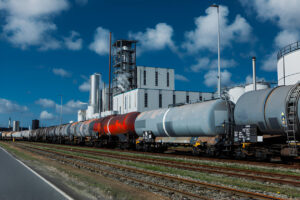The Ultimate Guide to Petroleum Wholesale
This ultimate petroleum wholesale guide is your all-in-one resource for understanding the global energy supply chain. Whether you’re managing refined fuels like gasoline, diesel, or jet fuel, this guide covers every aspect of petroleum wholesale — from rack pricing and logistics to compliance and industry trends. Covering refined fuels like gasoline, diesel, and jet fuel, and their efficient distribution to industries and consumers. Petroleum wholesale is the backbone of the global energy supply chain, ensuring that refined fuels like gasoline, diesel, and jet fuel reach distributors, industries, and consumers efficiently. In this guide, you’ll learn the ins and outs of the wholesale market: pricing mechanisms, supply‑chain logistics, regulatory compliance, emerging trends, Custom Fuel Blending Services deep‑dive—to optimize your operations from refinery rack to retail pump.
2. Glossary of Key Terms
- Rack Pricing: The base per‑gallon price set at the refinery’s loading rack.
- Crack Spread: The margin between crude‑oil cost and the combined price of refined products.
- ICPO (Irrevocable Corporate Purchase Order): A binding buyer’s commitment in international trades.
- SPA (Sales and Purchase Agreement): The formal contract detailing terms, volumes, and pricing.
- TSR (Tank Storage Receipt): Proof of product storage in a tank farm or terminal.
Understanding Petroleum Wholesale
At its core, petroleum wholesale involves purchasing refined products in bulk—often thousands to millions of gallons—from refineries or large suppliers and reselling them to smaller distributors, large end‑users, or retail chains. Unlike retail, where consumers fill up at the pump, wholesalers negotiate volume discounts, manage logistics, and mitigate price risk through futures contracts. Common wholesale products include:
- Gasoline (Regular, Mid‑Grade, Premium)
- Diesel (ULSD, Off‑Road)
- Jet Fuel (Jet A, Jet A‑1)
- Heating Oil and Marine Fuels
By operating at scale, wholesalers leverage economies of scale, sophisticated risk management, and strategic storage to deliver consistent supply at competitive rates.
The Petroleum Wholesale Supply Chain
The journey from crude‑oil well to fuel tank involves several stages:
- Upstream (Exploration & Production): Major players like ExxonMobil and Chevron extract crude from fields.
- Midstream (Refining & Storage): Refineries process crude into transportable products. Refined fuels are stored in tank farms near ports or pipeline hubs.
- Downstream (Wholesale Distribution): Wholesalers purchase products at the refinery rack, arrange transport (pipeline, tanker, truck), and store inventory at terminals.
- Retail & End‑Use: Fuel is delivered to gas stations, airlines, manufacturers, and other end‑users.
- Consumption: Final users burn fuel for transportation, power generation, and industrial processes.
Infographic Placeholder: Supply‑Chain Flowchart (Upstream → Midstream → Wholesale → Retail → Consumption)
Key Petroleum Wholesale Pricing Mechanisms
Rack Pricing
Set daily by refineries, rack prices reflect spot‑market conditions plus a fixed service margin. Buyers at the rack benefit from the lowest per‑gallon cost but assume logistics responsibilities.
Crack Spread
Calculated as:
Crack Spread = (2 × Gasoline Price + Diesel Price) / 3 – Crude Oil Price
This metric gauges refining profitability and informs wholesale margins.
Spot vs. Contract Pricing
- Spot Contracts: One‑time, immediate delivery at current rack price.
- Term Contracts: Multi‑month agreements with volume commitments and price formulas (e.g., “Crack Spread + $0.10/gal”).
Chart Placeholder: Rack vs. Contract Pricing Comparison
Logistics & Compliance in Wholesale Petroleum
As outlined in this ultimate petroleum wholesale guide, strategic logistics reduce costs and improve fuel delivery reliability
Transportation Modes
- Pipelines: Most efficient for large volumes over land.
- Tankers & Barges: Ideal for international or coastal shipping.
- Trucks: Flexible for last‑mile delivery to remote terminals or stations.
Tank Farms & Terminals
Strategic storage reduces spot‑market exposure. Key considerations:
- Location: Near demand centers or refinery outlets.
- Capacity: Enough to cover peak‑season demand.
- Turnover Rate: High turnover reduces holding costs.
Regulatory Landscape
Compliance with:
- EPA (Clean Air Act, RFS2)
- IMO (Marine Fuel Sulfur Limits)
- Local Fuel Quality Standards
Documentation & Protocols
- ICPO & SPA: Ensure binding, transparent trade terms.
- TSR: Confirms product custody.
- Quality Certificates: Verify product specs (ASTM, EN standards).
Calculator Placeholder: Volume vs. Cost‑Savings Estimator
Petroleum Wholesale Market Trends & Future Outlook
This ultimate petroleum wholesale guide also highlights the shift toward ESG reporting and carbon pricing regulation
Technological Trends
Digital tools are revolutionizing wholesale:
- AI‑Driven Demand Forecasting improves inventory planning.
- Blockchain enhances transaction transparency and reduces fraud.
- IoT Sensors on tanks and pipelines enable real‑time monitoring.
7.2 Environmental & Regulatory Trends
The push for greener energy reshapes the market:
- Biofuel Blends & LNG: Wholesalers add low‑carbon fuels to portfolios.
- ESG Reporting: Investors demand sustainability metrics.
- Carbon Pricing: Impacts wholesale margins and contract structures.
8. Competitive Landscape Snapshot
| Distributor | Key Strength | Gap You Fill |
|---|---|---|
| Petroleum Wholesale L.P. | Regional fleet & bulk services | Global insights, deep‑dive educational guides |
| SC Fuels | Category blogs & success stories | Pillar content with interactive tools |
| OPIS Insights | Expert market analysis | Proprietary data plus real case studies |
9. Expert Insights & Case Studies
“Wholesale margins have tightened, but smart logistics and hedging can preserve profitability.”
— Jane Smith, Former VP, Global Fuels Trading
In one case study, a Midwest distributor saved 8% annually by switching to term contracts indexed to crack spreads and optimizing terminal locations—demonstrating the power of strategic wholesale planning.
10. Downloadable Resource & Lead Magnet
Get Your Free Checklist:
Download the “Ultimate Petroleum Wholesale Optimization Checklist” to ensure you’re covering every critical step—from pricing analysis to compliance audits.
Schema Note: Implement How‑To schema for the download steps.
11. FAQs on Petroleum Wholesale
(FAQ Schema)
1. What is petroleum wholesale?
Bulk purchase and distribution of refined fuels from refineries to distributors or large end‑users.
2. How do wholesale prices affect retail fuel costs?
Wholesale rack and contract prices form the base for retail margins; fluctuations pass through to consumer pump prices.
3. What is rack pricing?
The per‑gallon price set at the refinery rack, reflecting current market conditions.
4. How can I hedge against price volatility?
Use term contracts with fixed spreads, futures contracts on exchanges like NYMEX, or options strategies.
5. How do environmental regulations impact wholesale operations?
Regulations (e.g., sulfur limits, RFS2) require product specifications, affect sourcing strategies, and may incur compliance costs.
Conclusion Section
Use this ultimate petroleum wholesale guide to stay ahead of the curve and navigate the complexities of global fuel trade


Plunge into the epic universe of EVE Online. Forge your empire today. Fight alongside hundreds of thousands of explorers worldwide. Begin your journey